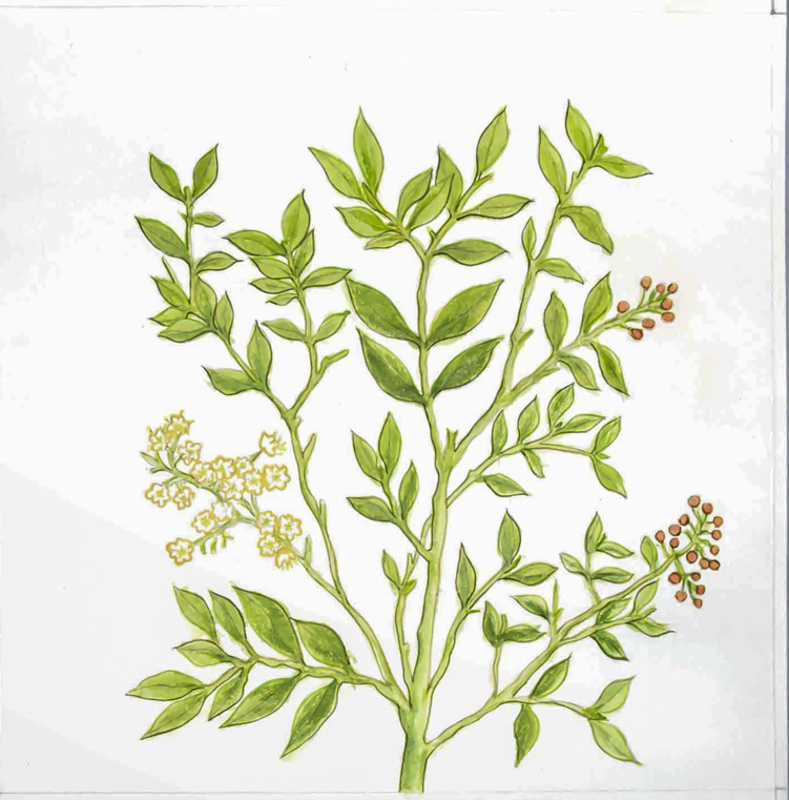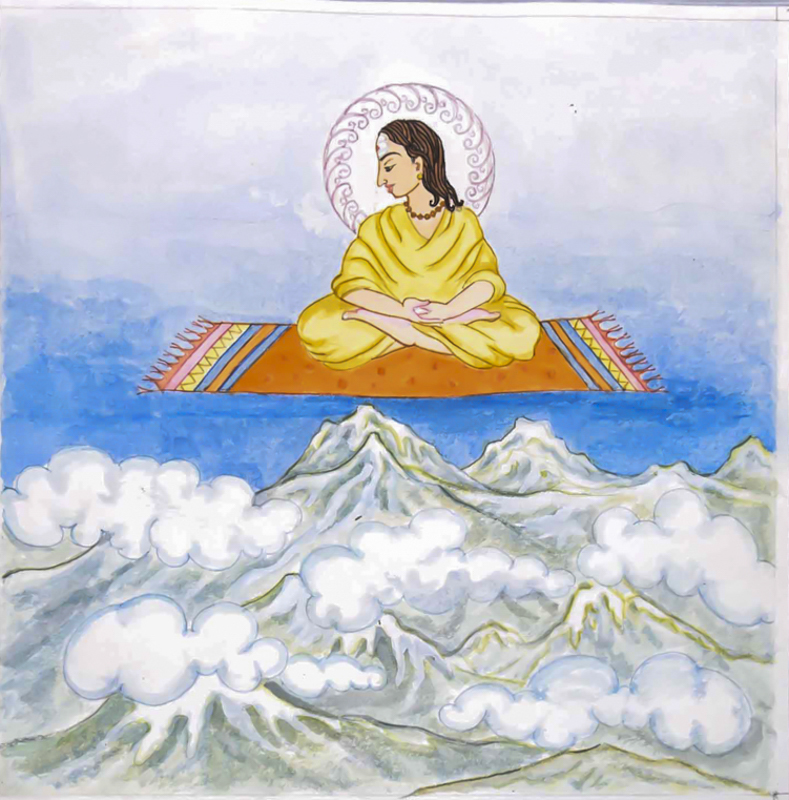Pillar Fourteen
Artwork by A. Manivelu
Top

NORTH FACE:
DrumstickThe drumstick tree and fruit, Moringa oleifera, is a fast-growing, drought-resistant tree native to tropical and subtropical regions of South Asia. It yields long, slender, triangular seed-pods which are a popular vegetable in Indian curries, and is also used in herbal medicine and for water purification.

EAST FACE:
Henna PlantThis is the henna plant, Lawsonia inermis, used to make a temporary dye for body art, staining the skin. This is known as mehndi, popular in Hindu weddings. Henna has been used since antiquity to dye skin, hair and fingernails, as well as fabrics including silk and wool.

SOUTH FACE:
DvajaDvaja is the saffron-colored Hindu flag. It flies near temples, ashrama, mathas and other institutions to represent the rising morning sun, and speaks of the promise of dharma, as the sun promises another divine day of life.

WEST FACE:
GhantaThis is a bell, ghanta in Sanskrit, which means “to speak.” the bell is an important implement in Hindu worship (puja), used to chase away asuras and summon devas and Gods.
1 of 4
Middle

NORTH FACE:
Instinctive MindThis woman plucking mangos from a tree is representative of the instinctive mind, meaning “natural” or “innate.” From the Latin instinctus, “impelling, instigating.” In a religious context, instinctive and instinctiveness are used to describe the lower animal instincts of human nature as well as lower astral aspects of humans—for example, self-preservation, procreation, hunger and thirst, also the emotions of greed, hatred, anger, fear, lust and jealousy. The first steps on the spiritual path consist in learning to harness these tendencies and impulses and transmute their energies into the higher nature.

EAST FACE:
Intellectual MindThis scholar represents the intellectual mind, also called Buddhi chitta. It is the faculty of reason and logical thinking and the source of discriminating thought, rather than the ordinary, impulsive thought processes of the lower or instinctive mind, called manas chitta. Buddhi chitta is of the manomaya kosha.

SOUTH FACE:
Superconscious MindThe yogi is on a flying carpet high above the mountains. This is to represend the superconscious mind, Satchidananda, the Divine Mind of God Siva and of all souls, for “there is only one mind.” The superconscious mind is “the mind of light,” of omniscient knowing, omnipresent awareness, pure consciousness, truth and love. Within the individual, it is one of the five states of mind: conscious, subconscious, sub-subconscious, sub-superconscious and superconscious. From another perspective, the superconscious is one of the three phases of the mind: instinctive, intellectual and superconscious.

WEST FACE:
Self, Beyond MindThis golden chakra with a pure dot at the center represents the Self beyond the mind. Same as Self-God or Parasivam, God Siva’s perfection of Absolute Reality, Parasiva, that which abides at the core of every soul. The term self in lower case denotes the personal ego, one’s individual identity or personality in contrast with the Divine Self.
1 of 4
Bottom

NORTH FACE:
TrimurtiThis is Trimurti, a classic representation of God Siva as the threefold Deity image—Brahma, Vishnu and Rudra.

EAST FACE:
LakulisaThis is God Siva as Lakulisa. The name also refers to a most prominent guru (ca 200) of the ancient Pashupata school of Saivism. The Pashupata Sutras are attributed to him.
1 of 2
